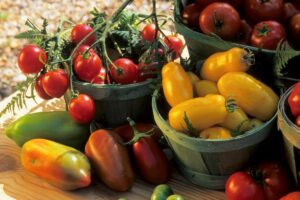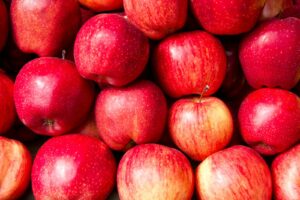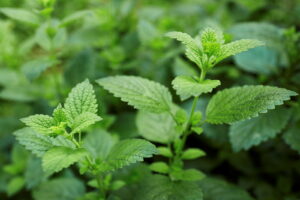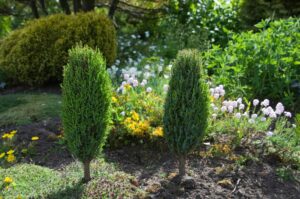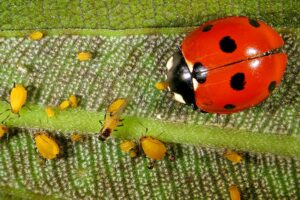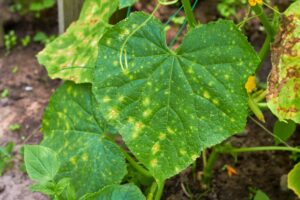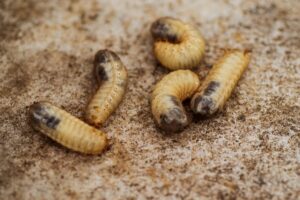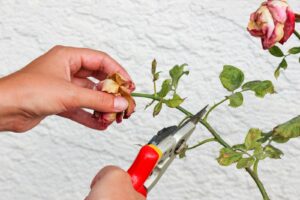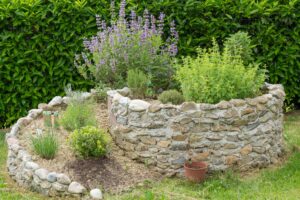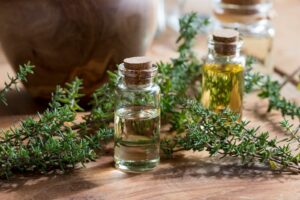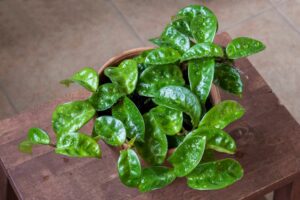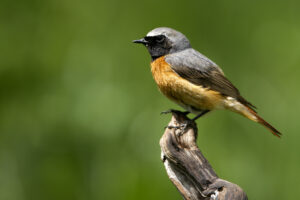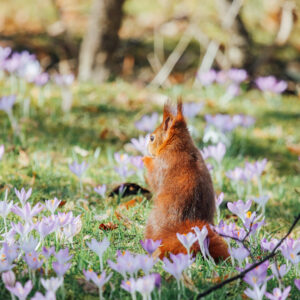Kiwi: hardiness, propagation & benefits
Once considered exotic, kiwi fruits are loved by many. But what many do not know is that they can also be grown in the UK.

When it comes to kiwis, most people are familiar with the fuzzy kiwi fruit (Actinidia deliciosa). However, there are a few different species of kiwi fruit, some of which differ greatly in appearance. Read on for an overview of kiwis.
Contents
Kiwi: origin and characteristics
Botanically, kiwis belong to the genus Actinidia, which belongs to the plant family Actinidiaceae. Also referred to as kiwi fruit or Chinese gooseberry, kiwis are perennial, woody, climbing plants. They are deciduous fruiting vines that have elliptical, alternate foliage and pale yellow flowers that appear in June. Kiwi flowers can be hermaphroditic or unisex and later form the well-known and tasty kiwi fruit. Originally, the plants come from East and Southeast Asia, but now they are found all over the world.
Are kiwi plants hardy?
The hardiness of a kiwi plant depends on its species. The most commonly available species is Actinidia deliciosa; it can tolerate temperatures down to about -15 °C depending on the variety. We suggest only planting kiwis such as this in mild regions or at least ensuring they have a sheltered location. For colder regions, it is better to plant the golden kiwi fruit (Actinidia chinensis); this species is hardy down to about -20 °C. For a particularly frost-hardy species, look no further than the aptly named hardy kiwi (Actinidia arguta), which can tolerate temperatures down to -26 °C.
With that in mind, the first step to growing your own kiwis is choosing the variety best suited to your location. Keep sensitive varieties in a sheltered spot such as along a house wall, and no matter which variety you choose, if you plant a kiwi in a pot, it will need winter protection to prevent the roots from freezing; simply wrap the pot with horticultural fleece.

Propagation
There are a few options for propagating a kiwi plant. Learn here how to propagate a kiwi plant by sowing, cuttings or layering.
Sowing kiwi seeds
Kiwis can be propagated by seeds. It is important to keep in mind, however, that the fruit from which you take the kiwi seeds may be delicious, but the resulting new plant may bear completely different fruit. This is a result of sexual reproduction: kiwi plants propagated by seed will always be slightly different from the parent plants.
If you decide to propagate with seeds, do your best to remove all of the fruit flesh from the seeds and then dry them. In spring, sow the kiwi seeds in pots with a suitable compost and keep them on a warm, sunny windowsill. A seedling compost like our Plantura Organic Herb & Seedling Compost is great for this purpose, as it is designed and developed for propagation.

- Perfect for herbs as well as sowing, propagating & transplanting
- For aromatic herbs & healthy seedlings with strong roots
- Peat-free & organic soil: CO2-saving composition
Kiwi seeds need light to germinate. Simply place the seeds on top of the soil and water them generously. It is important to keep the soil moist until germination. Try covering the pot with some cling film to keep the environment around the seeds moist. With steady temperatures between 20 to 25 °C on a windowsill, the kiwi seeds will germinate in 1 to 3 weeks. Once the first shoots emerge from the soil, remove the cling film or any other covering. Then it is just a matter of time before the plants are large enough to be planted outdoors.

Propagating via cuttings
If you want to ensure that the kiwi plant you propagate is the same as the mother plant, try propagating it via cuttings. When it is time to prune your kiwi plant in early summer, locate a young healthy shoot that is about 15cm long and not yet woody. Remove the lowest leaves until only one or two remain; this step helps the cutting conserve moisture by preventing too much water evaporating out of excess leaves. Cut the lower end of the shoot at an angle and insert the shoot about two thirds deep into a suitable compost. Our Plantura Organic Herb & Seedling Compost is also suitable for this. As with sowing, the soil must be kept constantly moist while the cutting develops roots. Keep the potted cutting in a location with temperatures around 20 °C and in indirect sunlight. Try dipping the cutting in rooting hormone to help it develop roots.

- Perfect for herbs as well as sowing, propagating & transplanting
- For aromatic herbs & healthy seedlings with strong roots
- Peat-free & organic soil: CO2-saving composition
Propagating by layering
Another tried and true method of kiwi propagation is layering. In contrast to cuttings, this involves rooting a shoot that is still connected to the mother plant. Locate a long shoot that is already growing close to the ground and weigh it down so that the middle of the shoot is touching the soil. Use a wire hanger or some stones to pin the shoot to the soil, keeping the tip of the shoot free. Apply some fresh soil over the section that is pinned down and keep it constantly moist.
A similar method is air layering, which can be used to root shoots that cannot reach the ground. To do this, fill a small plastic bag with compost and wrap it around the shoot you want to root. Here too, it is important that the soil in the bag is always moist. The constant contact with moist soil stimulates the shoot to form new roots at the point of contact. Once the shoot has grown some roots, remove it from the mother plant and place it in its own pot, where it can develop further.

Harvesting kiwi fruit
With the right care, kiwi plants bear abundant fruit. Harvest times vary between kiwi species. Species with small fruit, such as Actinidia arguta, are ripe and ready for harvest around October. Simply check if the fruit is ripe by testing the fruit’s firmness; if it yields to a light press, the kiwi fruit is ripe. For larger varieties, the harvest is usually from the end of October to November. It is not uncommon to harvest after the first frosts in autumn, although the fruits may not be ripe at this time. Like with small varieties, you can check if the fruits are ripe by testing their firmness. Hard kiwi fruits contain a lot of acid and little sugar, making unripe kiwis unpleasant to eat.
However, with the right storage, a not-quite-ripe kiwi can become edible. Kiwis are climacteric fruits, meaning they continue to ripen after they are harvested. Therefore, it is best to store your kiwis in a cool, dark cellar or in the refrigerator. Store kiwis you would like to eat soon at room temperature to have them ripen more quickly. The shelf life of fresh kiwi fruit is only a week or two, so it is often necessary to preserve some of them if the harvest is abundant. A good way to preserve them is to thinly slice and dry the fruit or boil it down to a puree or jam; preserving or drying kiwi fruit keeps it good for several months.

Are kiwis good for you?
Thanks to their ingredients, kiwis are very healthy. They contain numerous vitamins, such as vitamin C, and plenty of dietary fibre. To get the most out of kiwi health benefits, eat the fruit as fresh as possible, as the important ingredients degrade the longer they are kept in storage. Unfortunately, many healthy components are also lost during preservation, but it is worth it to prevent the fruit from spoiling altogether.
Is kiwi poisonous to dogs and cats? Kiwi fruit are not poisonous to humans or pets. Feel free to treat your four-legged friends to some kiwi if they are interested. However, the plant itself is slightly poisonous, so if your pet shows interest in your kiwi plant, consider placing the plant in an inaccessible location. If you are interested in growing more exotic fruits in your garden, take a look at our article on the pepino (Solanum muricatum).
